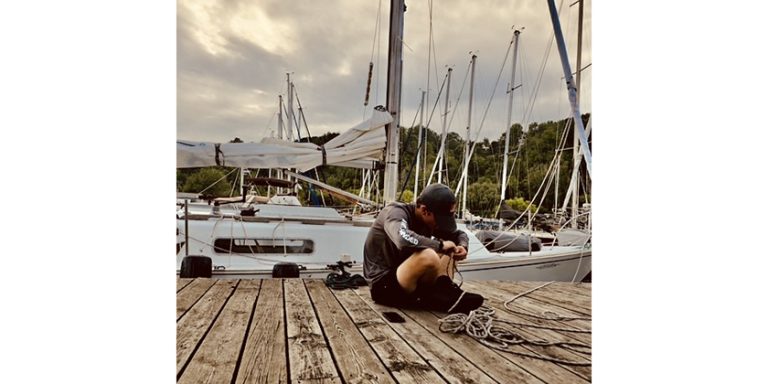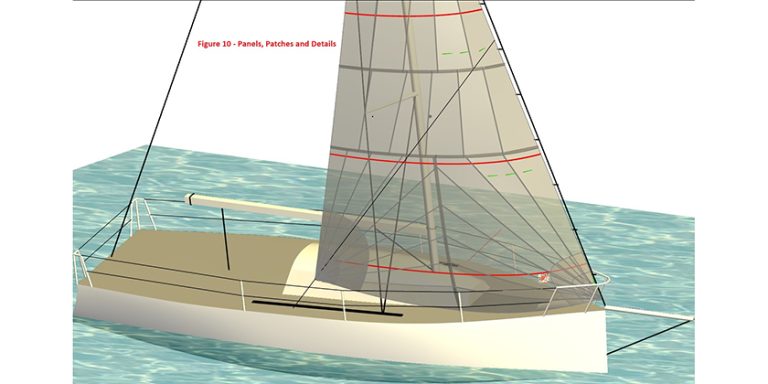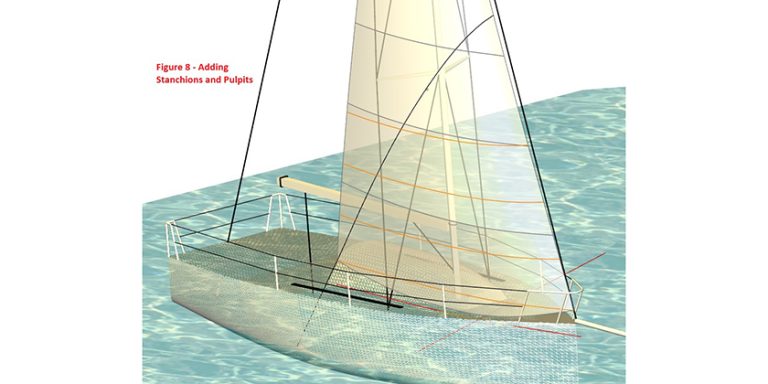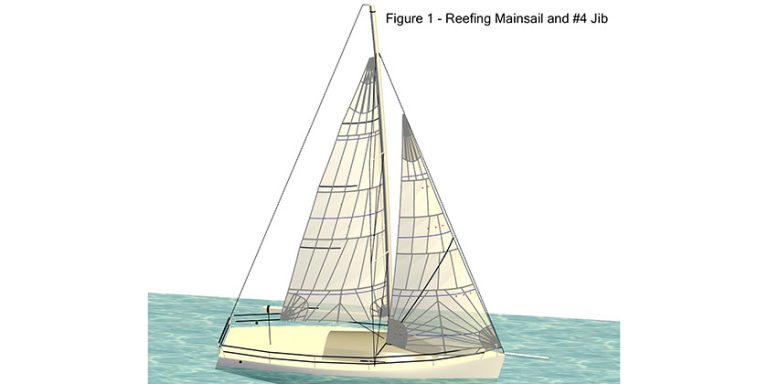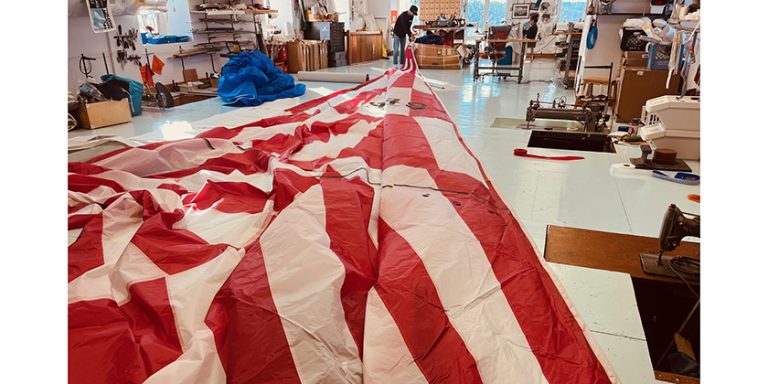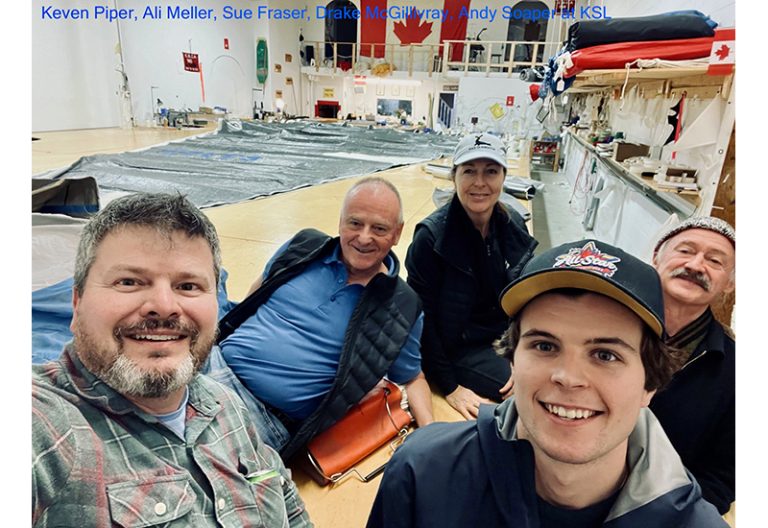Keven talks sails: The Racing In and Outs of Headsail Furling
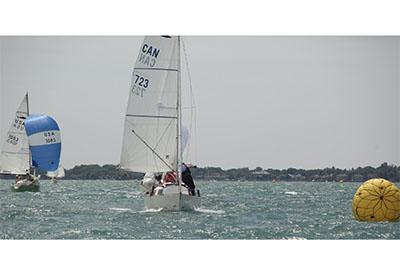
Jan 28, 2021
This month I will discuss some tactical reasons for wanting to be able to roller furl or reef the headsail. Most modern furling systems are so reliable and easy to use, that you can furl or unfurl the headsail in seconds.
I’m sure that you are imagining rolling the sail up as soon as you get your spinnaker up and drawing. This is nice and cleans up the foredeck, but make sure you have the spinnaker drawing before you furl. My experience is that spinnakers rolled up in furlers are particularly good for sailmakers like me! The most advantageous uses however are on start lines and rounding leeward marks.
On starts I like to maneuver with the headsail completely furled or only partially out (only if your class allows), depending on how well your boat can maneuver with only a main up. This allows you to cruise around the start at half speed, and if you want to hold up and slow on the line, the flapping headsail won’t drag you to leeward. The half speed start box maneuvering also allows you to speed up by unfurling if you are slightly late for the start. Even if you don’t have furling, consider using this half speed start maneuvering, it gives you a better chance of being on the line at go.
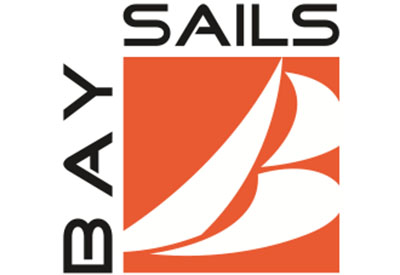 The leeward mark is even better! On the windward-leeward courses in club races or weekend short course events, most of us find ourselves sailing into the leeward mark at very deep angles, if not dead downwind. One of the difficulties with these deep-to-upwind mark roundings is that we tend to leave extra space between the boat and the mark. There are two main boat physics reasons that cause this to happen, and not just sloppy helm work. These deep-to-upwind roundings require more of a course change and rudder movement with the boat than if we sail in with hotter angles and make a shallower upwind turn. The second effect is the drag to leeward from having an undertrimmed or overtrimmed headsail trying to pull the bow down away from the mark when we try to get close to the mark.
The leeward mark is even better! On the windward-leeward courses in club races or weekend short course events, most of us find ourselves sailing into the leeward mark at very deep angles, if not dead downwind. One of the difficulties with these deep-to-upwind mark roundings is that we tend to leave extra space between the boat and the mark. There are two main boat physics reasons that cause this to happen, and not just sloppy helm work. These deep-to-upwind roundings require more of a course change and rudder movement with the boat than if we sail in with hotter angles and make a shallower upwind turn. The second effect is the drag to leeward from having an undertrimmed or overtrimmed headsail trying to pull the bow down away from the mark when we try to get close to the mark.
Funny thing that overtrimmed pushes the bow down, and slightly undertrimmed causes the jib to load up sideways and cause the same thing to happen. If we leave the headsail furled and spin the boat up with the main only, we allow the sail balance to turn the boat, and we don’t have the drag of the headsail that we have to fight with more rudder. Slick as anything, when the nice tight rounding is finished and you are on the correct upwind heading, the headsail can unfurl directly to upwind trim with minimal winching. Try it….it works like magic.
Shall we discuss Gennakers next month? Please post questions or comments and I will try to include a discussion of those points in following issues.
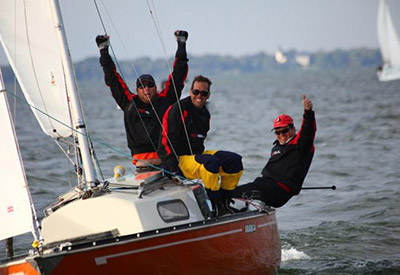 Keven Piper – Sailmaker, Bay Sails, Hamilton, Ontario
Keven Piper – Sailmaker, Bay Sails, Hamilton, Ontario
Keven Piper, two-time Shark 24 World Champion, founded Hamilton, ON-based Bay Sails in 1998.
email: baysails@gmail.com

